Registered with the Registrar of Newspapers for India under R.N.I 53640/91
Vol. XXX No. No. 16, December 16-31, 2020
Tamil Nadu’s quest for Gold
by Varsha Venugopal
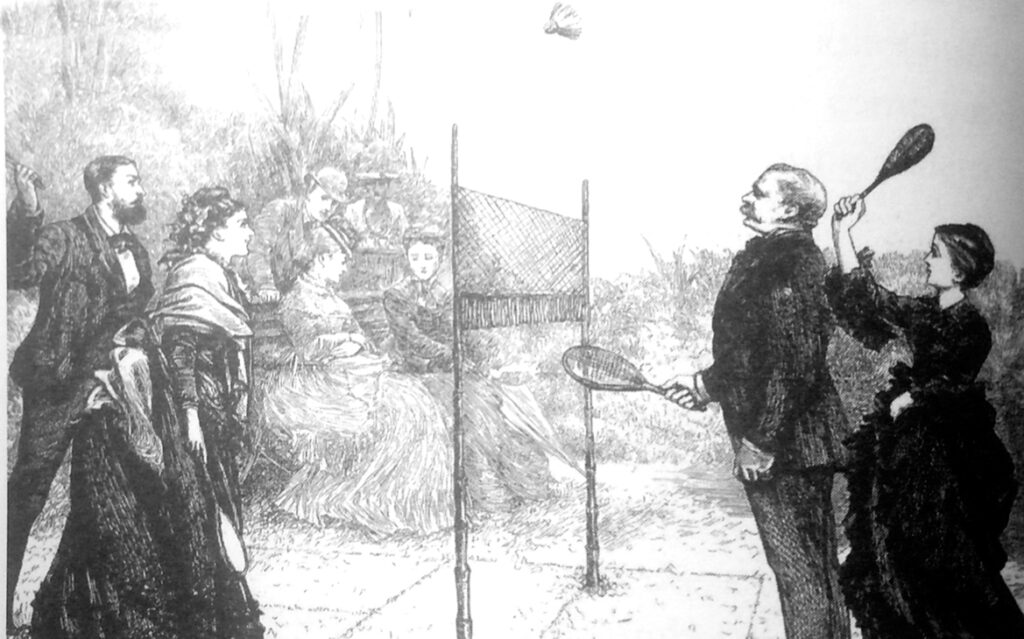
The newly invented game of Badminton in the late 1800s. (All pictures are reproduced from the book.)
Chennai’s love for a good game is perhaps best described by way of an anecdote that is well-known in cricketing circles. It’s certainly one of my favourites. It was 1997. India was playing a cricket match against arch-rival Pakistan at the Chepauk Stadium. As the crowd watched Pakistani batsman Saeed Anwar expertly demolished the Indian bowling line-up, relentlessly putting away boundaries one after the other. Racking up a mammoth 194 runs, he ended up breaking Viv Richard’s record of the highest individual score in ODIs. It isn’t a knock that fans of the Indian team fondly remember, but Chennai’s audience didn’t let such a small thing as losing hold them back from appreciating Saeed Anwar’s brilliant game that day. When Anwar’s innings came to an end on being caught out by Ganguly, the crowd broke into a thunderous applause which lasted until he disappeared out of view – a moment that many sports commentators still refer to as an example of the city’s sporting spirit.
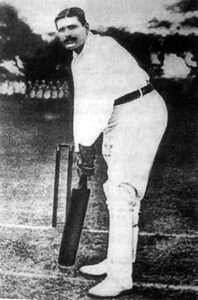
Buchi Babu – The Father of Indian Cricket.
With such an ethos, it is little wonder that the city has produced many legends – multiple World Chess Champion Viswanathan Anand calls Chennai home, as do tennis legends Ramesh Krishnan & Mahesh Bhupathi as well as squash stars Dipika Pallikal and Joshna Chinappa. There’s a lot to unpack in Chennai’s – and Tamil Nadu’s – sporting legacy, and who better to take up this Herculean task than celebrated writer S. Muthiah? With his book Tamil Nadu’s Quest for Gold, S. Muthiah aims to give readers a comprehensive overview of the history of sports in the State. Readers familiar with Muthiah’s work know exactly what to expect from the volume – a goldmine of information backed by solid research and passion for his subject of study. And that is precisely what they get.
The blurb on the dust jacket says – “Over 250 black and white pictures and easily comprehensible text take the reader through a 200-year journey from the elitist hobbies of the early 19th Century British Raj to the present day where men and women from the State have achieved their fair share of national and international glory, and Paralympic Gold, too.” If you feel a tad overwhelmed at the vast scope, rest assured that you’re not alone. I felt rather daunted myself, in the beginning. I soon realized, however, that even though the book itself is huge – at 600 pages, it certainly isn’t a short book – it is neatly structured as a string of chapters that are stand-alone reads in their own right, each one devoted to providing information about a single sport. While readers can get a fairly detailed insight into Tamil Nadu’s history in popular sports like cricket, tennis, golf, squash or table-tennis, they can also enjoy Muthiah’s splendid narratives on niche sports in the State such as ball-badminton, fencing or wushu. The book is such a giant piece of work that one feels that it had to have been written by a keen sports enthusiast, and true enough, the foreword from Tamil Nadu Sports Association President N. Ramachandran contains a surprising nugget of information – “Many people may not even be aware that Mr. Muthiah started his life in journalism as a sports journalist,” he writes. In all, the book covers the State’s history of a staggering 43 unique sporting activities. In most chapters, Muthiah presents readers with a plethora of information, providing an insight into the origin of the sport in focus, its introduction to India and its growth in Tamil Nadu.

The Madras team that won the Ranji Trophy for the first time in 1955 captained by R.B. Alaganan. Standing
(l to r): B.S. Alva, J. Ramakrishna, M.K. Balakrishnan, M.K. Murugesh, A.K. Sarangapani, S. Balakrishnan, M.G. Bhavanarayanan, N. Balasubramaniam. Sitting (l to r): A.G. Kripal Singh, C.D. Gopinath, R.B. Alaganan, V. Patta-
bhiraman (Manager), B.C. Alwa, D.L. Chakravarthi, M. Suryanarayan.
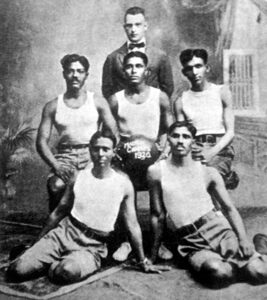
Harry Crowe buck and the first generation of Madras College of Physical Education students in 1920.
Some of the origin stories are quite fascinating to read. Did you know, for instance, that snooker traces its origins to 19th Century Ooty? Or that fencing came into its own as a professional sport when duels were banned? Or that chess is preceded by a similar strategy game of Indian origin, chaturanga, that was supposed to have been played even during the age of the Ramayana? Delightful pieces of sports trivia like these are peppered throughout the book. The chapter on cricket contains one that I particularly enjoyed – “Cricket came to India in the 18th Century with the British sailors. It is stated that the game was first played in Madras around 1765 on the Island Grounds, in the shadow of Fort St. George,” reveals Muthiah. His words popped into my mind as I crossed Island Grounds the very next day. I also loved the author’s introduction to bridge, in which he describes how integral card games were to Company culture in the days of the British Raj – ‘Fortunes were made in a few years and lost in a night at cards,’ he writes. As Muthiah puts it, card games were so popular in those days that the Bengal and Madras clubs had to build card rooms for playing members.
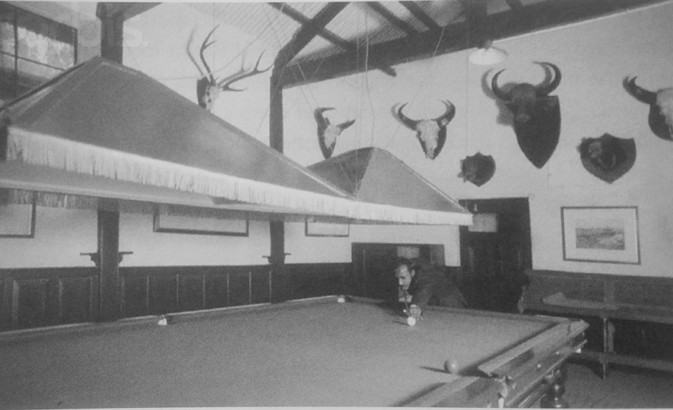
The historical Billiards room at the Ooty Club, the official birthplace of Snooker.
The author’s efforts to set each sport in the context of the history and culture of the day makes for enjoyable reading, not just for the sports aficionado but for the lay non-fiction reader, too. The chapter on sailing, for instance, traces the history of the sport all the way back to the period right after the Carnatic Wars, when the English “began moving out of the Fort to settle on the Great Choultry Plain, between Triplicane and Purasawalkam.” Muthiah describes how the new residents began sailing on the city’s watercourses at Ennore, Red Hills, the Adyar and Cooum rivers, eventually going on to form the Madras Boat Club. The author also gives a detailed insight into the bodies that govern and promote each sport in the State, with eye-opening accounts into the mechanisms by which sports flourishes in the region. For the stats followers, the book provides meticulous data on each sport, with win-loss statistics and commentaries in some cases.
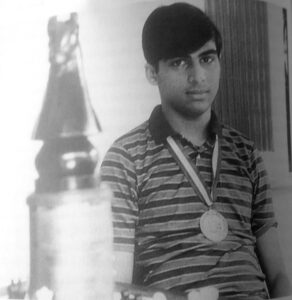
Vishwanathan Anand – India’s
first Grandmaster in 1998.
There are also surprising anecdotes and stories related to little-known sporting heroes from the State. To my delight, I learned about the tennis player Narumanchi Narayanamurthi. From the book – “Narumanchi Narayanamurthi, born in 1885 in Peddaravuru near Tenali, was from a poor family and was encouraged by Rev. Wolfe and Rev. Penn. He grew into a complete player at Madras Christian College. When he returned to his hometown, he won many tournaments in Machilipatnam, Kakinada, Rajahmundry, Vizagpatnam and Srikakulam. In 1918, he returned to Madras to study for a law degree and then began his best period in tennis… Between 1916 and 1923, he won the MCCC title every year except in 1921. He took a set off Japanese player Shimuzu who was on his way to Wimbledon and played an exhibition match against him. Dressed in khadi, he played barefoot most of the time.” As an amateur tennis player, the thought of a barefoot player plucking a set off a Wimbledon contestant is too joyful for words.
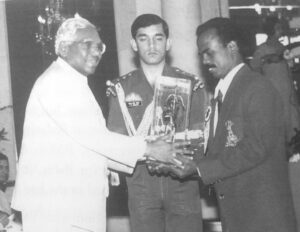
Maria Irudayam, the only Arjuna Awardee for Carrom.
I also loved the tale of a rugby match played in 1890 Madras in defiance of an off-the-cuff remark scoffing at the possibility. Muthiah provides a few lines from the autobiography ‘An Outdoor Wallah’ by E.H.D Sewell, describing the event:
“Somebody wondered one evening in the long bar of the Madras Club why the devil nobody ever played Rugger in Madras. ‘Rugger?”’ cried the Man of Gloom who is generally about when such remarks are made. ‘You’ll never again see Rugby in Madras; why, how the heck are you going to raise two teams, not to mention those necessary nuisances, a ball and a referee?’
That did it.
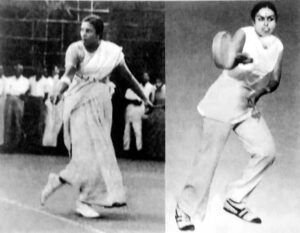
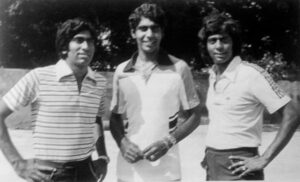
The Amritraj brothers – Ashok, Vijay and Anand. Above: Indira Sambasivam and Lakshmi Mahadevan, when women played Tennis clad in saris and Salwar Kameezes.
Next to me was ‘Beefy H.N.C Campbell, who was in the Bedford side just before me. ‘We’re not standing for that, Fatty, are we? I know Frank Orman’s about somewhere, so…’ was the burden of his song in my ear.
Where there are O.Bs (Old Boys) there’s Rugger, is an old maxim. So, in less than a fortnight from the non possumus, we lined out on the Island, a full fifteen a side on a pitch which you could hardly see for the puddles.”
One can’t help but wonder at the amount of research that the author had to have put in to dig up these astonishing stories.
‘Tamil Nadu’s Quest For Gold’ is a book for the keen sports fan who will undoubtedly appreciate Muthiah’s trademark storytelling supported by painstakingly-compiled facts – quizzing enthusiasts will definitely find themselves richer after a read. It isn’t one of those books that one devours in a single sitting – one feels that it wasn’t meant to be enjoyed that way, in fact. Readers will find themselves going back to the book often, cracking open a chapter for an entertaining read on a rainy day along with a cup of tea. If that sounds like it’s up your alley, then ‘Tamil Nadu’s Quest For Gold’ must find a place on your bookshelf.

